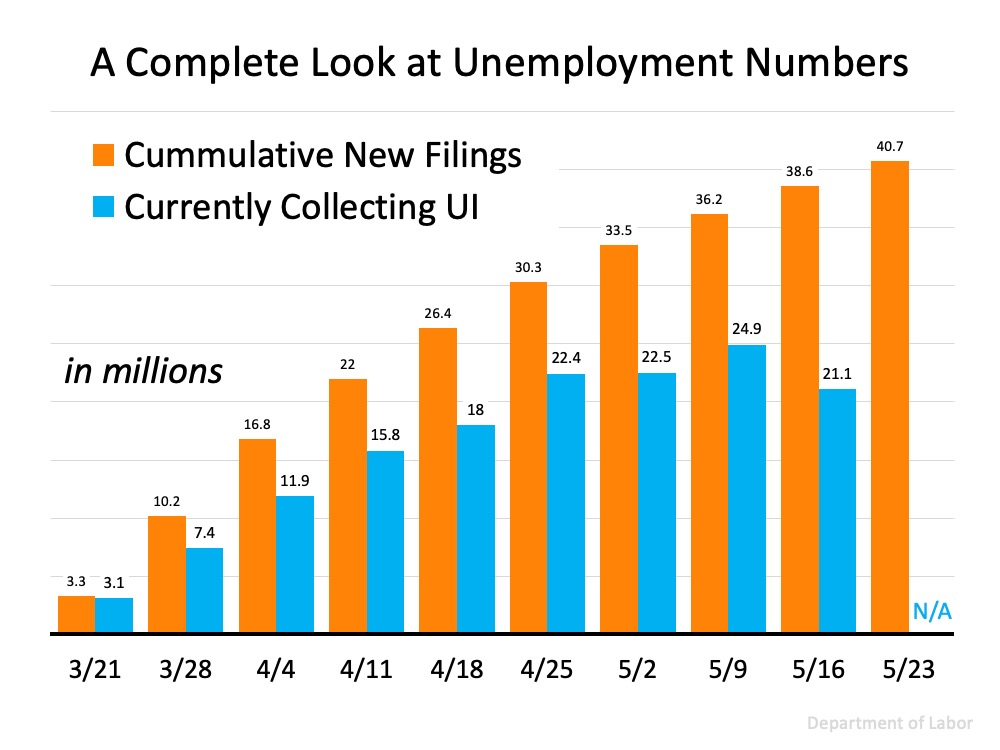Tomorrow morning the Bureau of Labor Statistics will release the latest Employment Situation Summary, which will include the most current unemployment rate. It will be a horrific number. Many analysts believe unemployment could be greater than 20%. These numbers represent families across the nation that are not sure when (or if) they will return to work. The emotional impact on these households is devastating.
There are, however, some small rays of light shining through on this issue. Here are three:
1. The actual number of unemployed is less than many are reporting
The number of people unemployed is sometimes over-exaggerated. It seems that every newscaster talks about 40+ million people “currently” unemployed. It is true that, over the last ten weeks, over 40.7 million people have applied for unemployment. It is also true, however, that many of those people have already returned to work or gotten a new job. The actual number of people currently unemployed is 21.1 million. This is still a horrible number, but about half of what is often being reported.
2. Of those still unemployed, most are temporary layoffs
Last month’s unemployment report showed that 90% of those unemployed believe their status is temporary. Friday’s report will probably show a decline in that percentage as the original number was somewhat optimistic. However, a recent survey by the Federal Reserve Bank showed that employers believe over 75% of job losses are temporary layoffs and furloughs. This means 3 out of 4 people should be returning to work as the economy continues to recover.
3. Those on unemployment are receiving assistance
According to a recent study from the Becker Friedman Institute for Economics at the University of Chicago, 68% of those who are eligible for unemployment insurance receive benefits that exceed lost earnings, with 20% receiving benefits at least twice as large as their lost earnings.
Bottom Line
Tomorrow’s report will be difficult to digest. However, as the nation continues to reopen, many of those families who are impacted will be able to return to work.
Over the long holiday weekend, I watched several programs where economists and pundits predicted that the unemployment rate will rise in the first half of 2012.
I’ll try to simplify why I agree that the unemployment rate will jump back to 9% in the first few months of 2012.
First, why did the national unemployment drop last month from 9% to 8.6%? One reason is that those who were surveyed, that were unemployed, I’d guess more than half, stopped looking for work. People aren’t considered unemployed if they haven’t looked for work in a particular month.
From my understanding, the Labor Department surveys 110,000 people each month, which is intended to represent 240 million employable workers. So every one person questioned represents 2,200 people who weren’t questioned. Please don’t ask me why they picked these numbers.
According to the Labor Department’s formula, if out of the 110,000 people only 100 stated that in the last survey they weren’t looking for work and in the first 2012 survey they are, the unemployment rate would increase 0.1%. So, if 400 people out of 110,000 stated they’re now optimistic and are looking for work again, compared to a few months ago the jobless rate would increase to 0.4% to 9%.
This is where it gets interesting. We presently have 6.6 million employable Americans who have given up looking for work. Do you think it’s possible with a new year, and Obama starting his presidential nomination tour (how we’re out of the ditch and moving forward) that a fraction of those 6.6 million who gave up looking for work will start looking again? If so, wouldn’t the unemployment rate go up?
Okay, one can argue that I didn’t take into account new jobs being created. According to Calculated Risk if the population only increases 1.8 million over the next 12 months. It would take 187,000 jobs added per month over the next year to hold the unemployment rate steady.
Your thoughts?